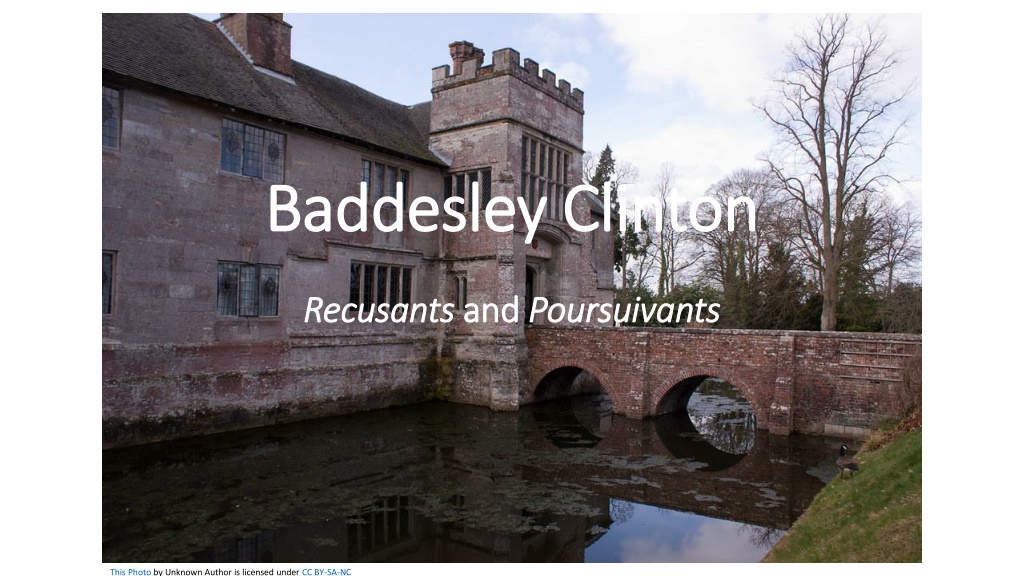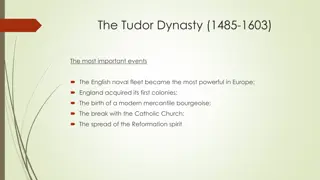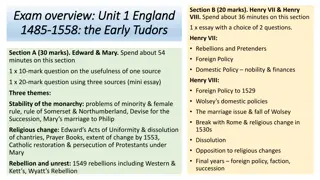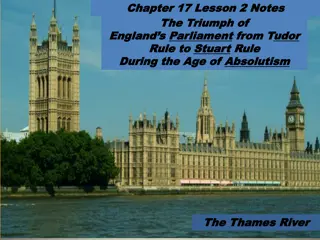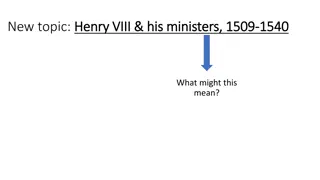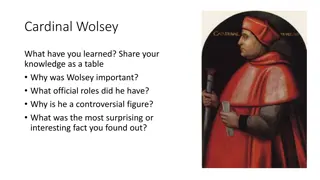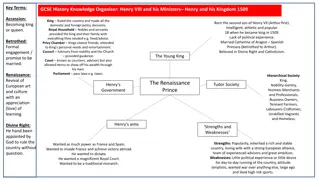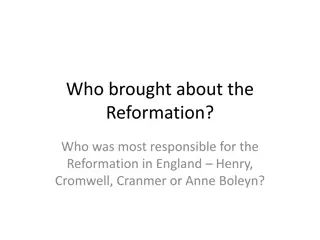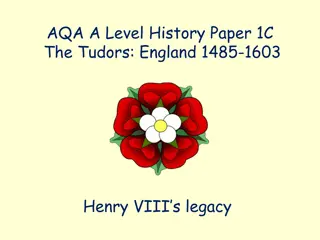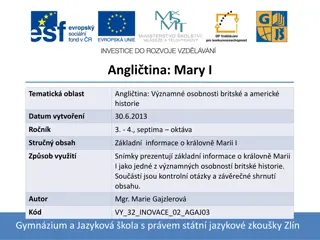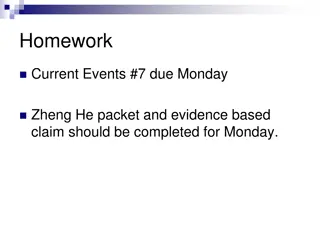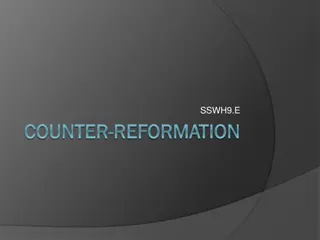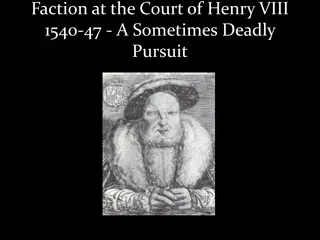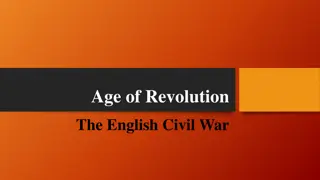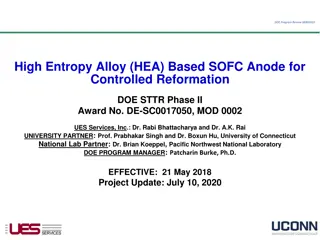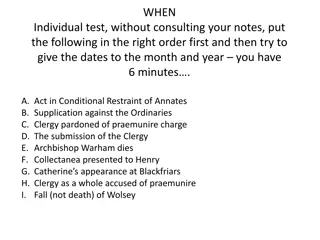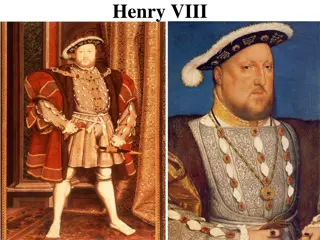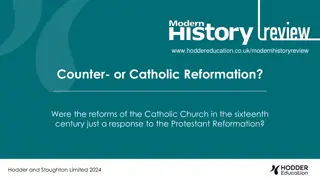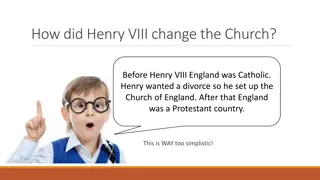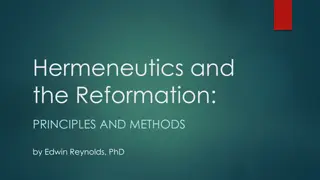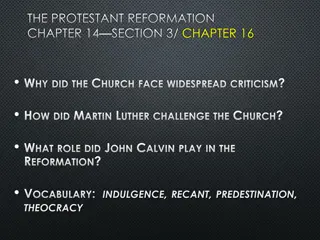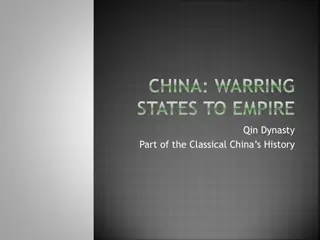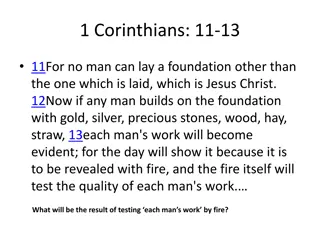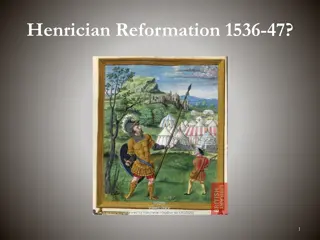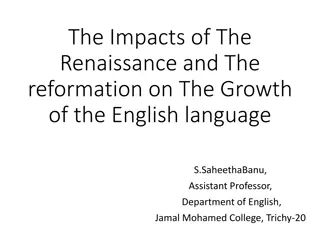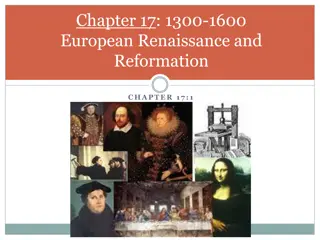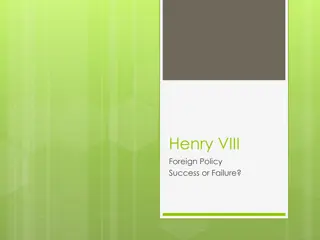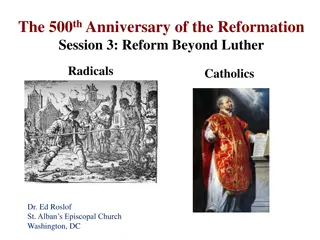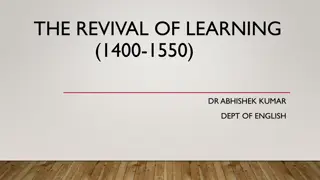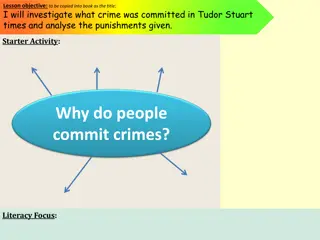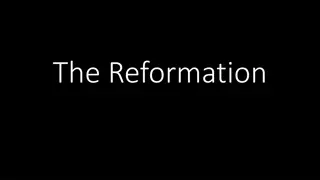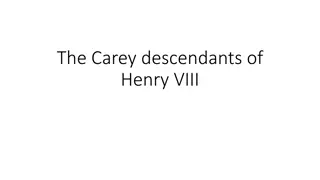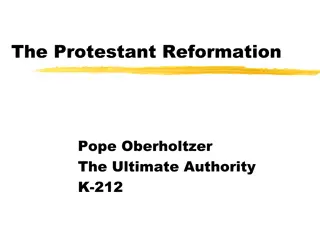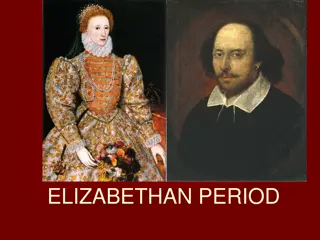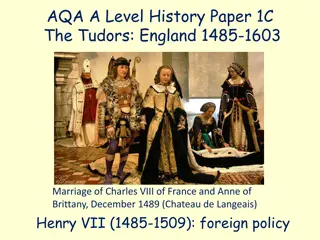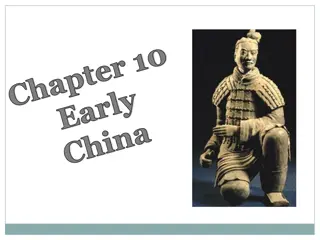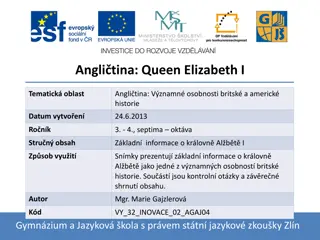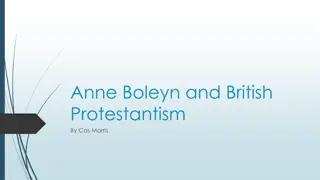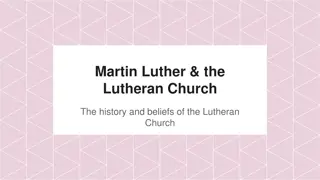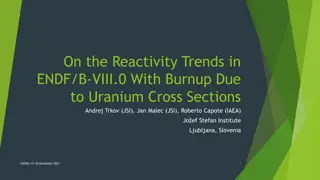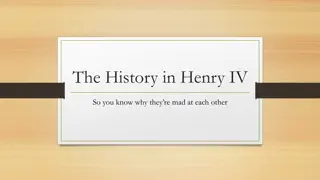The Tudor Dynasty: Henry VIII, Reformation, and the Creation of the Church of England
Explore the rich history of the Tudor dynasty with a focus on Henry VIII, the Protestant Reformation in Europe, and the pivotal creation of the Church of England. Learn about key events such as Henry VIII's marriages, his quest for a male heir, the beginnings of Protestantism in England, and the establishment of the Church of England under his son, Edward VI.
Download Presentation

Please find below an Image/Link to download the presentation.
The content on the website is provided AS IS for your information and personal use only. It may not be sold, licensed, or shared on other websites without obtaining consent from the author. Download presentation by click this link. If you encounter any issues during the download, it is possible that the publisher has removed the file from their server.
E N D
Presentation Transcript
Baddesley Clinton Baddesley Clinton Recusants Recusants and and Poursuivants Poursuivants This Photo by Unknown Author is licensed under CC BY-SA-NC
History of the house History of the house Built in the 13th century Most parts date back to 15th century Typical example of Tudor manor house Belonged to the Ferrers family for more than 500 years This Photo by Unknown Author is licensed under CC BY-SA
The Beginnings of the Protestant Reformation The Beginnings of the Protestant Reformation The start of the Reformation in Europe Start of Reformation in Europe usually dated to around 1517 with the publication of Martin Luther s theses in the German town of Wittenberg. Reasons for the Reformation in Europe - Criticism of Indulgences - Desire for reform of the Roman Catholic Church - Different approach to the Bible (scholastic learning vs. return to the original text of the Bible
Henry VII (1485-1509) Henry VIII(1509- 1547) 1. Catherine of Aragon 1 daughter: Mary I (1553-1558) The Tudors The Tudors 2. Anne Boleyn 1 daughter: Elizabeth I (1558-1603) 3. Jane Seymour 1 son: Edward VI (1547-1553)
Henry VIII and his Henry VIII and his Greate Greate Matter Matter Tudor dynasty is a recent dynasty (1485 1603) 1509: Henry VIII accedes to the throne Married to Catherine of Aragon (Spanish princess) No living male heir: need to remarry to get a male heir Needs the annulment of his marriage by the pope Pope unwilling to give a divorce The church in England was rich and the king was always short of money ...
The creation of the Church of England The creation of the Church of England 1533 Henry VIII divorces his 1st wife Catherine of Aragon and marries Anne Boleyn 1534 Parliament passes the Act of Supremacy making Henry the Supreme Head of the Church of England 1536-41 Dissolution of the monasteries 1547 Henry VIII dies His son Edward VI establishes Protestantism as the foundation of the Church of England
Anti Anti- -Catholicism Catholicism 1534/1558Act of Supremacy. Any person taking public or church office in England must swear allegiance to the monarch as supreme head of the church. Failure to do so constituted treason. 1559: Act of Uniformity. Worship in the Church of England is compulsory. 1641 a poll tax is levied. Catholics have to pay double. 1689 Bill of Rights & 1701 Act of Settlement: no future monarch may be a Catholic (has not been repealed; since 2013 the monarch is allowed to marry a Catholic). November 5of every year: Guy Fawkes Night/Bonfire Night. The effigy of a Catholic conspirator who planned to murder the king in 1605 is burnt on a bonfire.
Recusants Recusants Recusants were Roman Catholics who refused to renounce their faith and accept the new Church of England. Many anti-Catholic laws were passed. Among them: The Roman Catholic mass was declared illegal and attendance at Anglican church servies was made compulsory. Non-attendance of Anglican services was punishable by fines or imprisonment. In 1593, the Act against Popish Recusants limited their mobility of a 5-mile radius around their home. This meant that they needed to apply for permission to travel. Having Roman Catholic priests in the house was illegal.
Poursuivants Poursuivants: the : the Priest Priest- -catchers catchers Roman Catholic families still attempted to practice their religion but holding mass was illegal. Roman Catholic priests travelled in disguise from safe house to safe house to minister to Catholic families. Recusant families built priest holes , secret rooms to hide RC priests. Gangs of poursuivants or priests-catchers would go to houses of recusants to try and catch the priests. Capture would mean certain death for any RC priest
Baddesley Clinton: Baddesley Clinton: recusants recusants and and poursuivants poursuivants The Ferrers family of Baddesley Clinton remained a Catholic family 1580s: the house is rented out to 2 sisters who were well-known recusants 1591 a band of poursuivants arrive at the house and search it for 4 hours. They did not find the priests hiding in the house Take a look at the priest hole in the kitchen.
Catholic Emancipation Catholic Emancipation 1791Roman Catholic Relief Act. Mass becomes legal again. Catholics may become priests, run schools and serve in the army, but not as officers, enter the legal profession. Catholic churches may be built. 1829Catholic Emancipation. RCs may become members of parliament and are no longer barred from high office in the judiciary or state. Baddesley Clinton There is now a Roman Catholic chapel on the first floor.
